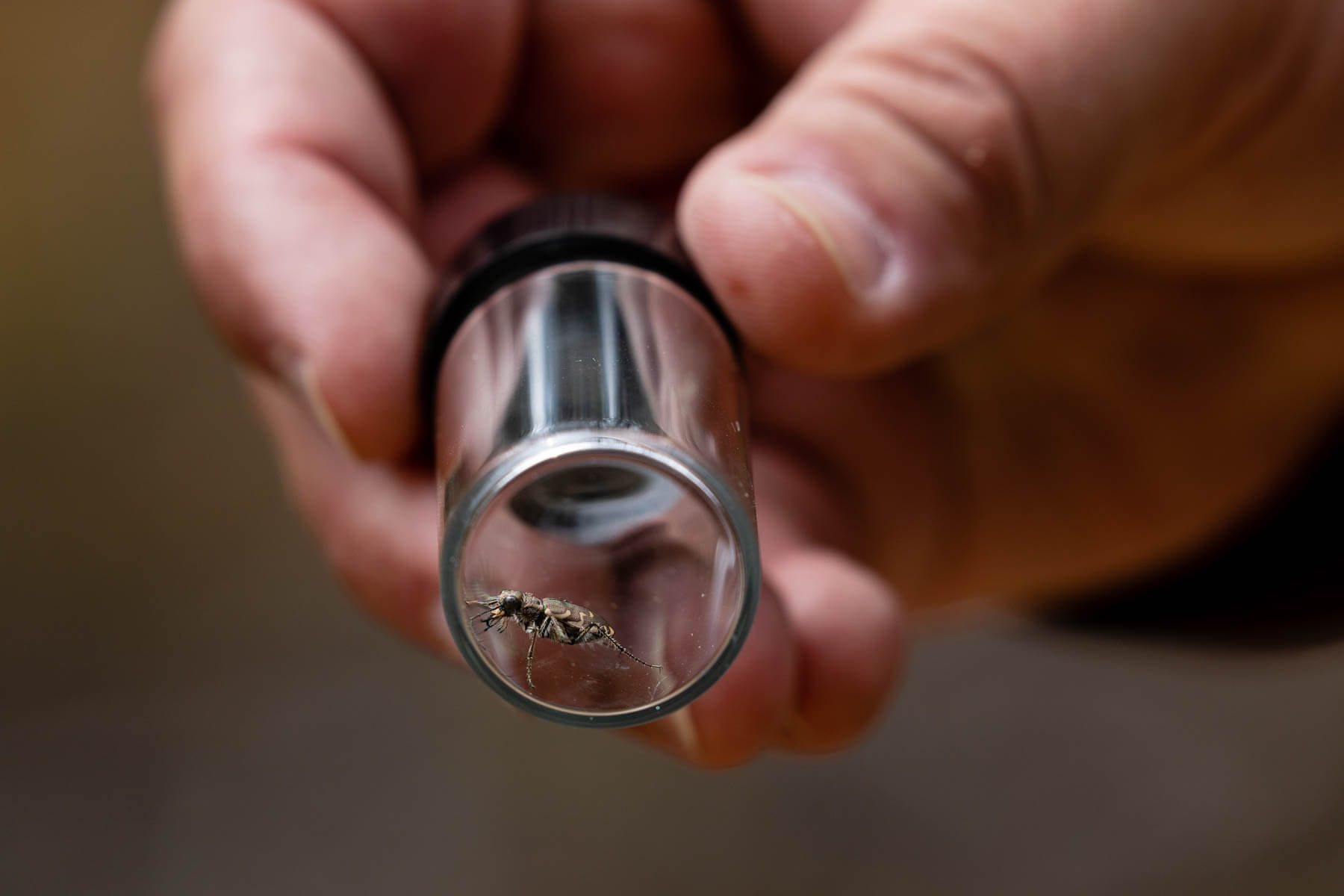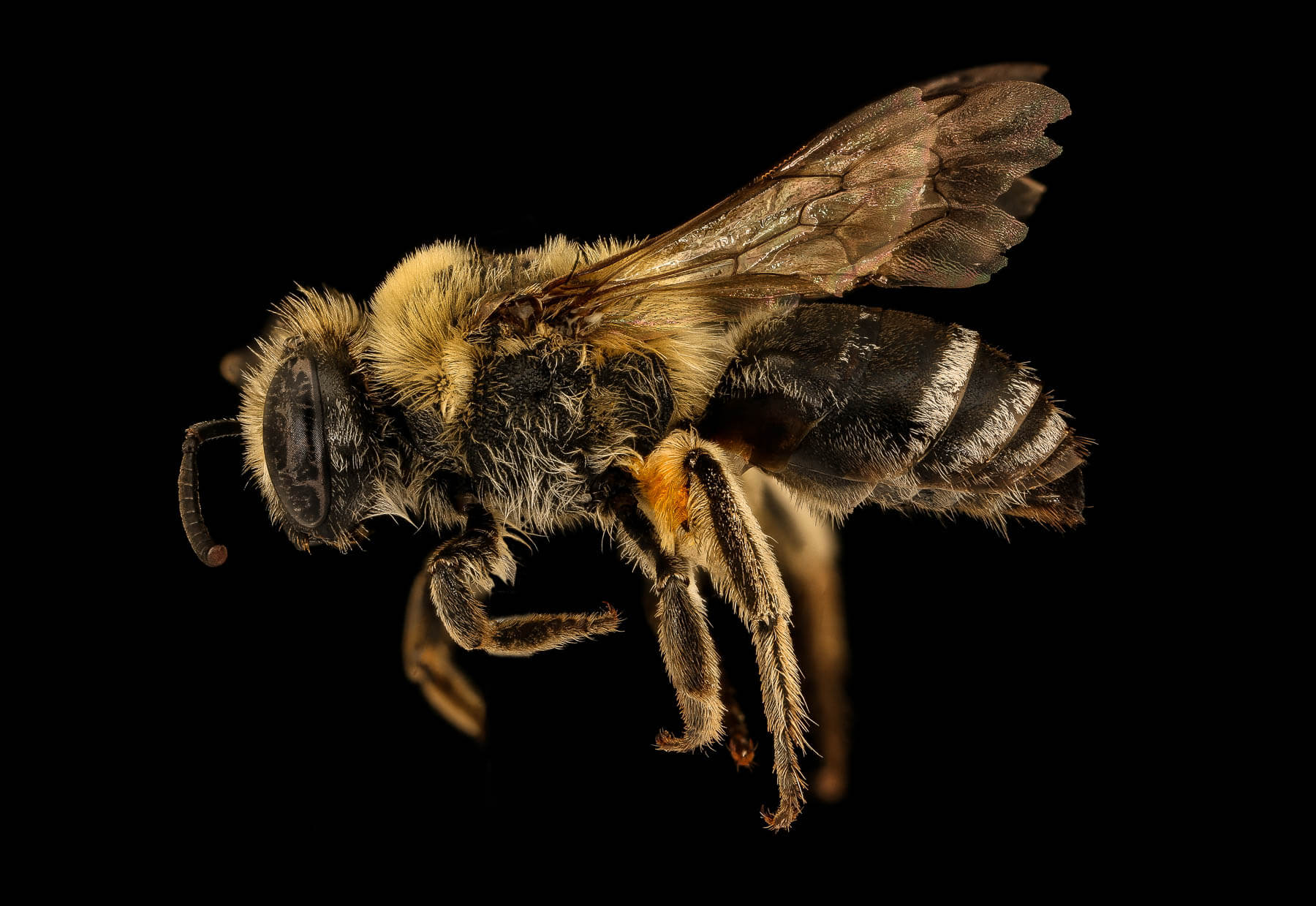For bees and other wildlife, a stretch of sand is a land of plenty

Near a swampy forest littered with trash, two biologists went searching for insects. A chance of rain had dampened their morning prospects, but with the temperature climbing, the mild afternoon in March held the chance that their target species would be active.
Sam Droege, who leads the U.S. Geological Survey’s Native Bee Inventory and Monitoring Lab, was looking for ground-nesting bees. Jonathan Mawdsley, a research associate with the Smithsonian Institution, was after tiger beetles. Because the insects share a common habitat—exposed, sandy soil—the two men were lured to one stretch of road near the Little Patuxent River in Maryland.
Mawdsley had found the area by scanning satellite images on Google Maps, looking for bare, undeveloped areas. The property they sought is a disturbed one, having been mined for sand several decades ago and abandoned. But that disturbance, followed by the natural process of ecological succession, makes it ideal for species that don’t live in a mature forest.
“Abandoned sand mines aren’t all bad,” Droege said. “Current reclamation of sand mines often removes most of their biological value.”
The area has been the site of a proposed rubble landfill for decades, but hints of its promising habitat lie nearby at Jug Bay Wetlands Sanctuary, which also holds a couple abandoned sand mines. Droege has surveyed more extensively there, finding rare bee species, including one new to science.
“Jug Bay’s rare bees are these sand mine bees, which could very well be in this place too,” Droege said.
Following a rutted dirt road, Droege and Mawdsley passed puddles holding tiny cricket frogs. The forest opened into an expanse of clay maybe 200 yards across. Red and bare like the surface of Mars, it wouldn’t support sand-loving bees. But, Mawdsley said, “there’s a whole bunch of things that nest in clay” like wasps and beetles.
“There’s a tiger.” Droege said, taken by surprise. He tried to follow as it took to the air. “It’s flying far away, Jonathan!”
“They do that,” Mawdsley replied.

Non-native callery pears dotted the edge of the forest, their snowy blooms contrasting starkly with the other trees, which had not woken up from winter. Droege approached a pear tree with his net, which whistled as he swept it across a branch. Flower petals shaken from the tree fell slowly around him.
As they walked and sampled, Droege found several bees on callery pears, but not many. The callery pear is an invasive species—native to Asia but lacking wildlife value in North America. Its flowers do attract some pollinators, but they often abandon the tree for better pollen sources once they become available.
Walking farther, they found steeper piles of sand amid the trees. Dotting the slope were small holes, freshly dug. Droege spotted a female mining bee from the genus Andrena. It was probably nesting.
Nearby, more trash, including the coiled metal skeletons of mattresses, paralleled a set of railroad tracks.
“This is really nice bee habitat,” Droege said. “To others it might look like crap; to me this is super.”
Joining the Andrena specimens, Droege found another type of bee that mimics wasps, called Nomada. Nomada, one of several types of cuckoo bee, are nest parasites of mining bees like Andrena. Rather than collecting pollen themselves, Nomada attack bee nests and lay their own eggs in the holes packed with food.
The day’s bee and beetle specimens were all destined for collections at the Smithsonian. At Droege’s lab, the workflow involves washing, drying, counting, labelling and identifying the bees. Where a specimen ultimately ends up may depend on the species, or whether it’s “weird or valuable or should go to a museum.” In addition, Droege’s lab uses a special technique for photographing bees, with many specimens appearing in its extensive digital archive.

After about two hours, the weather remained cloudy and it was time to head back. Warmer weather would only yield more bees later in the spring, and Mawdsley hoped to find more tiger beetles on a return visit as well. Near the main road, Mawdsley and Droege stopped to explain the value of the sandy habitat they had just explored.
“This is part of what’s called the micro-deserts along the Patuxent,” Droege said, explaining why they weren’t interested in the forest areas they had passed. “It’s this open, sandy habitat that traditionally was always here.”
“Sand habitats are a cornerstone of where we go to look for rare things, but also should be the cornerstone of conservation,” said Droege.
Mawdsley gestured back toward the sandy stretches they had explored, hidden beyond the forest and truckloads of discarded concrete and roofing shingles piled within sight of the road. “For native bees, 80% of them require things like that.”

Comments
Great Story! I saw a bunch of native ground-nesting bees out scouting and digging nests yesterday. They're making do with what habitat they can find!
Thank you!
Your comment has been received. Before it can be published, the comment will be reviewed by our team to ensure it adheres with our rules of engagement.
Back to recent stories